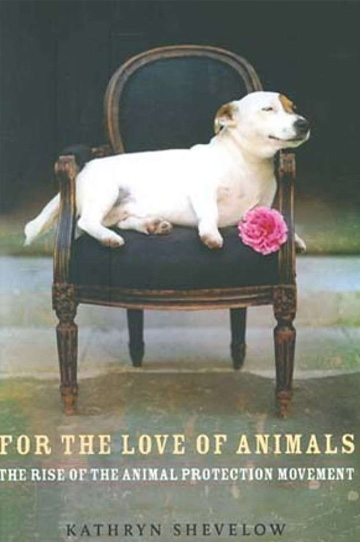Animal-welfare advocates have a difficult time getting the public’s attention. The main reason is that, given the undeniable scale and nature of animal abuse at the beginning of the 21st century – humans kill more than 50 billion farm animals every year and experiment on millions more – attention would demand action, including major lifestyle changes.
If that’s too daunting for most Americans, many would nevertheless confess to a vague awareness and occasional sense of guilt over the plight of animals. But the guilt melts away in that luxurious space between the fork’s tines and the seared flesh of a well-cooked steak, and as for awareness, most Americans prefer to limit theirs, hastily switching off the latest footage of animal abuse. This uneasy indifference has turned animal protectionists into the equivalents of weepy Save the Children mistresses, fighting in vain to be heard on an issue of undeniable importance. Through some perversion of decorum, it is those who address the problem – rather than those who turn away – who are thought to act in poor taste.
Hence the rise of an organization like People for the Ethical Treatment of Animals, whose shock tactics force us to confront animal suffering. While PETA has doubtless produced a net gain for animals through investigations, legal victories and shaming, its losses are real. The average news item quoting PETA’s president, Ingrid Newkirk, takes the form of “Just listen to PETA’s latest craziness,” and not “What horrible animal abuse PETA has uncovered!” To blame this all on PETA would be unfair, for it is ignoble to use the organization’s antics as a cover for disregarding the mistreatment of animals who, after all, can’t choose their spokeswoman. Still, moderate organizations like the Humane Society wish PETA would shut its enormous gob.
Infighting over radicalism in the animal-welfare movement isn’t new. In the 1830s, the brand-new Society for the Prevention of Cruelty to Animals splintered under the leadership of Lewis Gompertz, a vegan in the days when mere vegetarianism was considered outre. Gompertz aggressively investigated and prosecuted those who beat their horses, baited bears with pit bulls, stoned tethered chickens for sport or vivisected cats and dogs as a form of quasi-scientific spectacle – all unexceptional behavior at the time. Several SPCA leaders felt Gompertz went too far and left to pursue a less confrontational approach.
Gompertz’s prosecutions were made possible by what Kathryn Shevelow, a professor at UC San Diego and the author of “For the Love of Animals: The Rise of the Animal Protection Movement,” calls the world’s first real anti-cruelty law: Britain’s Ill-Treatment of Cattle Act. The bill passed in 1822, through the indefatigable efforts of a boisterous member of Parliament from Ireland, Richard Martin, known to posterity as Humanity Dick. Shevelow’s passionate and lively book explores the cultural role of animals in 18th and early 19th century England, chronicles Martin’s odyssey to protect them and culminates in the passage of the bill and the SPCA’s founding. It is a fascinating story.
If the major obstacle to the humane treatment of animals today is willful ignorance of animal suffering, in Martin’s time it was the belief that cruelty toward animals wasn’t wrong. Martin’s opponents also contended that the issue of animal welfare was unequal to the dignity of Parliament; that animal protectionists hypocritically targeted activities of the poor (bear baiting), while ignoring those of the rich (fox hunting); and that protecting cattle was a slippery slope. What would they want next? Protection for cats?
Martin and his allies, notably the anti-slavery crusader William Wilberforce, responded that animal protection was an important reform issue; that they would target the gentry’s abuses, too; and that even cats deserved protection. Martin’s Law, as it was called, laid the foundation for the legal protections for animals now in place.
But are those protections enough? Animal cruelty today may not be as overtly barbaric as in the 18th century, but because of factory farming it is much more widespread. This has been a rotten year for animals, from Chicago’s repeal of a 2006 ban on foie gras, to the death of the racehorse Eight Belles, to the Humane Society’s video footage of California slaughterhouse abuses. Meanwhile, even modest new anti-cruelty legislation stalls in the face of opposition from agribusiness and the restaurant lobby. The Farm Animal Stewardship Purchasing Act would require government suppliers to provide each animal “adequate space to stand, lie down, move his or her head freely, turn around completely and fully extend all limbs or wings without touching any part of an enclosure or another animal.” These standards are apparently too generous; the bill has languished in a congressional subcommittee for more than a year.
Shevelow’s book shows how far we’ve come in terms of animal protection, and how far we have to go.







